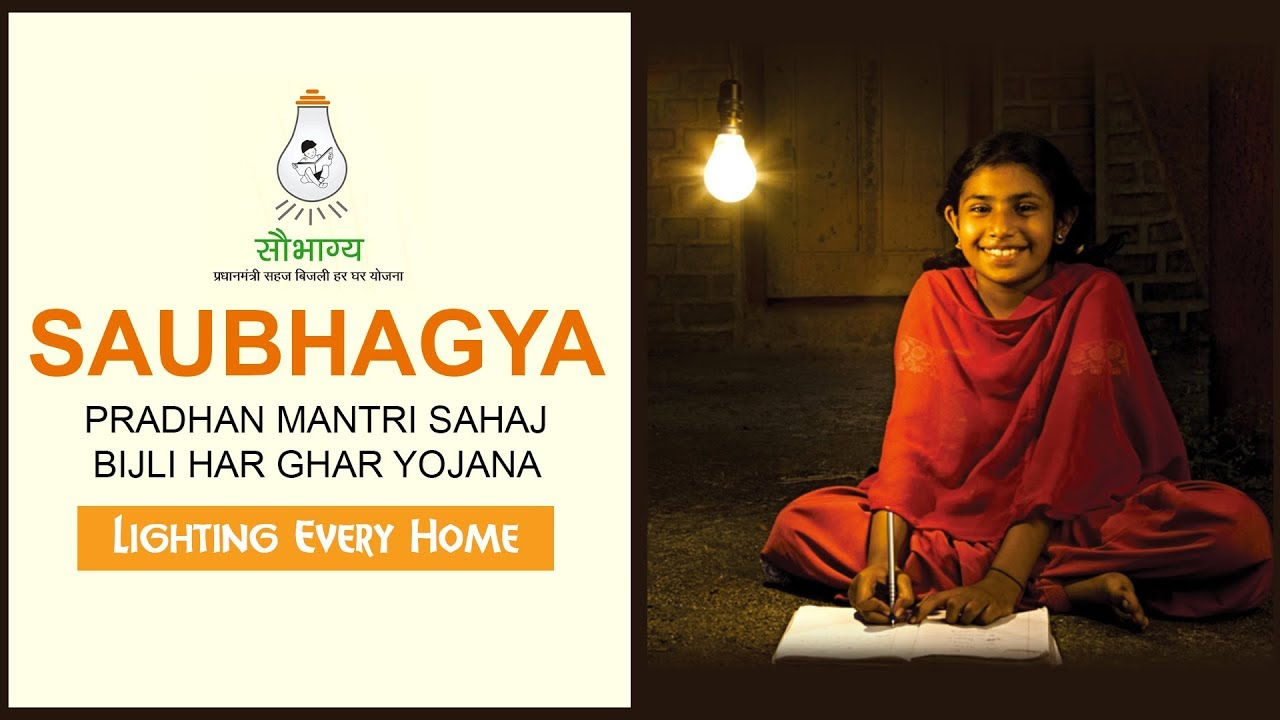Description

Copyright infringement is not intended
Context: The Ministry of Power presented the report on the Status of implementation of SAUBHAGYA Scheme in Lok Sabha
Details
- Pradhan Mantri Sahaj Bijli Har Ghar Yojana –“Saubhagya” is a scheme to ensure electrification of all willing households in the country in rural as well as urban areas.
- A total of 2.86 crore households have been electrified since the launch of Saubhagya.
- All households were reported electrified by the States, except 18,734 households in Left Wing Extremists (LWE) affected areas of Chhattisgarh as on 31.03.2019.
- 7 States namely Assam, Chhattisgarh, Jharkhand, Karnataka, Manipur, Rajasthan and Uttar Pradesh had reported that around 19.09 lakh un-electrified households, identified before 31.03.2019, which were unwilling earlier but have expressed willingness to get electricity connection. All these seven States have reported 100% household’s electrification as on 31.03.2021.
About SAUBHAGYA Scheme
- The Government of India launched the Pradhan Mantri Sahaj Bijli Har Ghar Yojana – Saubhagya in October, 2017.
- The Ministry of Power is the implementing authority of the scheme.
- The objective is to achieve universal household electrification for providing electricity connections to all willing un-electrified households in rural areas and all willing poor households in urban areas in the country by March, 2019.
- The aim of the ‘Saubhagya’ is to provide energy access to all by last mile connectivity and electricity connections to all remaining un-electrified households in rural as well as urban areas to achieve universal household electrification in the country.
- The beneficiaries for free electricity connections would be identified using Socio Economic and Caste Census (SECC) 2011 data.
- However, un-electrified households not covered under the SECC data would also be provided electricity connections under the scheme on payment of Rs. 500 which shall be recovered by DISCOMs in 10 instalments through electricity bill.
- The solar power packs of 200 to 300 Wp with battery bank for un-electrified households located in remote and inaccessible areas, comprises Five LED lights, One DC fan, One DC power plug.
- It also includes the Repair and Maintenance (R&M) for 5 years.
Significance of the SAUBHAGYA Scheme
- Access to electricity has a positive impact on the quality of life of people in all aspects of daily household chores and human development.
- Access to electricity would substitute use of Kerosene for lighting purposes resulting in reduction in indoor pollution thereby saving people from health hazards.
- Electricity access would help in establishing efficient and modern health services in all parts of the country.
- Lighting after the sunset also provides a sense of enhanced personal safety especially for women and increase in post sunset social as well as economic activities.
- Availability of electricity will boost education services across all areas and quality lighting post sunset would facilitate children to spend more time on studies and move ahead further in prospective careers.
- Household electrification also increases the likelihood that women would study and earn income.
https://www.pib.gov.in/PressReleasePage.aspx?PRID=1809294









.jpg)

.png)

